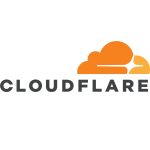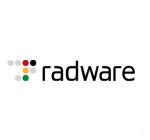What is our primary use case?
There are two major verticals for Citrix: VDI and NetScaler. For NetScaler, our major use cases are database load balancing, PowerVPN VPN access gateway, WAF (Web Application Firewall), and content switching. But most of them are for load balancing, access gateway, and VPN for NetScaler.
And for VDI, the major use cases are definitely securing the data and centralizing the entire infrastructure to the data center. Another major use case is publishing in-house applications for end-users who are working from home or from remote locations.
How has it helped my organization?
Our organization doesn't use it because we're very small. However, we have deployed the service for more than 10,000 users. Our smallest customer had 25 users, and the biggest customer had over 10,000 users.
We have eight people in the maintenance team for Citrix NetScaler, plus 24/7 customer support for day-to-day issues. They are managing multiple customers. Their expertise is at the level of RL1, three at RL2, one at L3, and one at L4.
What is most valuable?
For VDI, centralization, data protection, and data management are the most important features. As for NetScaler, its key features include a firewall, GSLB, load balancing, and an actual gateway. These are the four tiers of NetScalers.
What needs improvement?
Pricing is one area for improvement. It's on the higher side because NetScaler is a premium product used for over 70% of internet traffic worldwide. However, price is not the only concern. Manageability and adaptability can also be challenging for end customers, who may require the assistance of experts like us to deploy and manage the product effectively. Although this is good for us as partners, it can limit the product's appeal to customers who prioritize ease of use.
Moreover, having some GUI-based tools for log management and troubleshooting would be helpful and make it easier for customers to manage and troubleshoot their databases.
For the future release of Citrix NetScaler, I would like to see better pricing, as well as improved manageability and log management features.
Another thing is if a problem occurs, we have to rely on the central support system. We need to collect the log and send it back to support for analysis, and then Citrix support will provide the solution. It would be much easier to troubleshoot if something is handy, such as a web portal or a common platform where customers can upload logs and resolve some of the issues automatically.
Buyer's Guide
NetScaler
October 2025
Learn what your peers think about NetScaler. Get advice and tips from experienced pros sharing their opinions. Updated: October 2025.
871,358 professionals have used our research since 2012.
For how long have I used the solution?
I have been working with Citrix for over twelve or fifteen years, so I know everything about Citrix. We are using the latest update of this product.
What do I think about the stability of the solution?
It is a rock-solid solution, and I would rate it a ten out of ten.
What do I think about the scalability of the solution?
It is a scalable solution. I would rate it a nine out of ten.
How are customer service and support?
Previously, their support was great, especially two years ago. But these days, I'm seeing lots of slowness in providing solutions. The L1 support team is not ready, or the L2 team has a lot of work and is overburdened.
Therefore, sometimes they are very good and sometimes slow in responding, resulting in slow solution delivery.
How would you rate customer service and support?
How was the initial setup?
The deployment process is quite complex because it's a premium or tier-one product. It requires great knowledge and experience to make it easier. If you don't have the necessary knowledge and experience, you may struggle.
Moreover, the deployment process depends on the customer's requirements and priorities. If the customer is focusing on multiple options or use cases, it may take seven to ten days. But if it's a straightforward installation with only one solution, then two or three days is more than enough.
We are using both on-premises and cloud-based versions.
What about the implementation team?
We have a good team of ten people in India, and we are expanding our partnerships all over the world. We have even received orders from the USA. We are focusing more and more on the interaction market and are not looking to hire any consultants or other sources. Our company is the SI (system Integrator) for the product.
What was our ROI?
It's a good investment tool. If your own organization or any other organization invests in this product, it will be useful for their product line. This product is robust and reliable, which helps customers a lot.
What's my experience with pricing, setup cost, and licensing?
The cost of the product depends on the customer's requirements, so there is no fixed price. There are multiple licensing models. There are no additional costs for using this product. It comes with a support bundle, and the licensing is subscription-based. It means that you have to pay on a yearly basis.
Which other solutions did I evaluate?
Citrix can be quite expensive, and it can be challenging to qualify or close leads for 50 users or less than 100 users. Therefore, we are considering evaluating multiple products in parallel and finalizing one product we can pitch in our product line.
What other advice do I have?
I would recommend using Citrix. Overall, I would rate it an eight out of ten because every product has room for improvement. If I rated it a nine, it means there's almost no room for improvement, which is not entirely true. So, eight is a fair rating.
Which deployment model are you using for this solution?
Public Cloud
If public cloud, private cloud, or hybrid cloud, which cloud provider do you use?
Microsoft Azure
Disclosure: My company has a business relationship with this vendor other than being a customer. System Integrator (SI)



















